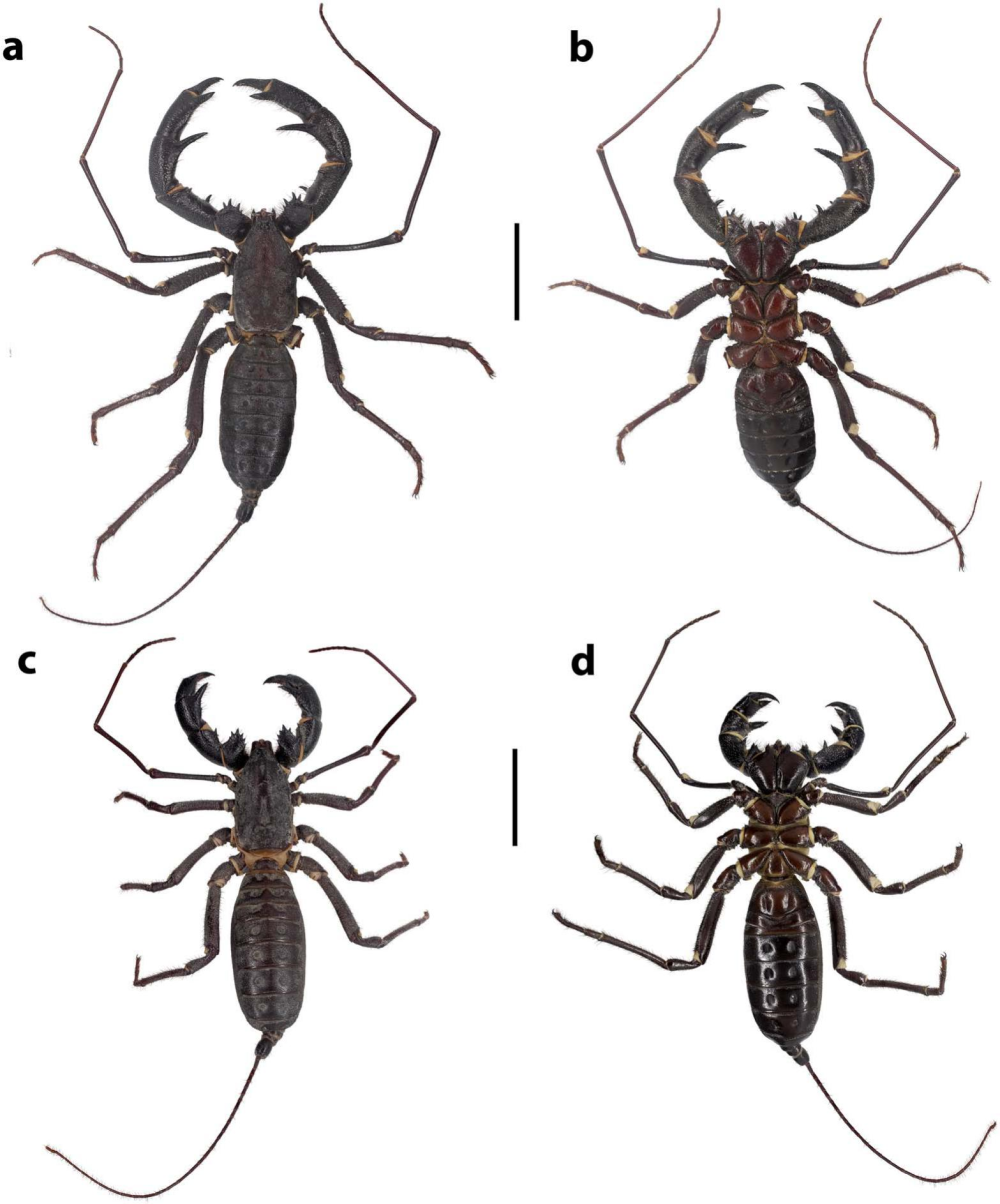If a skunk had a baby with a scorpion, you might just end up with something like a giant vinegaroon. These bizarre arachnids are named after the potent acid they spray that stinks to high heaven of acetic acid, the same thing you get a whiff of from vinegar. Now, three new members have joined the clan following a study that’s uncovering the diversity of giant vinegaroon in Mexico.
“These recent findings show us that the diversity of this amazing animal may be underestimated, at least in North America,” said study author Diego Barrales-Alcalá to IFLScience. “The importance of biological collections can be appreciated [in this study] because one of the species is described from a museum record from a locality in the Mexican state of Chiapas [in 1940]. This locality has undergone many changes over time, mostly related to deforestation, which made it difficult for us to find live specimens of Mastigoproctus yalchanchak on recent collecting trips.”
The three new-to-science species were a surprise as it’s long been thought that there was only one species of Mastigoproctus in North America, but now M. franckei, M. xetame and M. yalchanchak join the fold from Xilitla, the highlands of Jalisco, and La Esperanza, Chiapas, respectively. “What was found leads us to think that Mexico is a hotspot for species of arachnids of the order Thelyphonida, especially those of the genus Mastigoproctus (which can also be found in South American countries),” added Barrales-Alcalá.

It’s Mastigoproctus franckei!
Photos taken from Journal of Arachnology 51(2): 223-237 (2023); All images are protected by copyright
New insights into these whip scorpions are of vital importance because they are a tricky group to learn from as they’re not easy to find. However, science has uncovered a few of their tricks.
“They are formidable predators that feed on anything they can neutralize, including small vertebrate animals,” continued Barrales-Alcalá, who added that while spraying acid 16 times the strength of vinegar might seem like a decent attack, it’s mostly used for defense.
They also have a curious reproductive cycle that begins with a six-hour “dance” in which the female stimulates the male. Once successful, her hard work continues.

And here comes Mastigoproctus yalchanchak.
Photos taken from Journal of Arachnology 51(2): 223-237 (2023); All images are protected by copyright
“Once the female is fertilized, she creates an egg sac that she carries with her at all times. She buries herself waiting for the vinagrillos to be born. Once this happens, the female stays with them, protecting them until they can fend for themselves, but this is what we know about the most common species that live in the north of Mexico, about those in the south we know almost nothing.”
Barrales-Alcalá hopes next to venture south and beyond to fill in the gaps that remain around the vinegaroons’ distribution and diversity, but three new acid-spraying arachnids feels like a win to us.

And last but not least, Mastigoproctus xetame (again).
Photos taken from Journal of Arachnology 51(2): 223-237 (2023); All images are protected by copyright
“We are working to elucidate the diversity of vinegaroons in North America and their relationships with species from South America and other parts of the American continent,” he concluded. “In addition, I work on science communication on social networks aimed at better understanding these and other arachnids, seeking to help people understand their ecological value and their importance in the environment.”
The study is published in The Journal of Arachnology.
Source Link: The Acid-Spraying Giant Vinegaroons Just Gained Three New Members